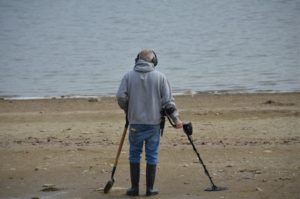Cancer is a fact that many of us will have to deal with at some point in our lives. It may not affect you directly, but someone you know might get the disease. Recent statistics show that at least one in three adults will have to face cancer at some point in their lives. This is a scary reality; however, you can remove the fear from something by learning more facts.
A settling fact to learn is that most cancers are treatable if caught early. So, how does someone go about detecting cancer? There are several ways that you can do this, so let’s look at them to ease your worry about the different types of cancer.
Get To Know Your Body
The first line of defense when it comes to cancer is getting to know your body. Cancer starts as a singular mutated cell that can spread as it mutates further. As you can imagine, this is going to make itself known in your body in several ways. It may be a swollen gland or an unrecognizable lump, but these changes are important to document.
A regular search of your body may catch these subtle changes. What’s more, these routine checks can help you understand how you are supposed to feel, making it easier to detect something that shouldn’t be there. Once you have found a discrepancy, then you should bring it up with your doctor. They can run further tests to deduce whether or not you have cancer scientifically.
Fluid Tests
Your body is full of different fluids. Each one has its own function, but these fluids also have a bigger role to play when it comes to detecting cancer. If your doctor has concerns about your health, they will often order a lab test. This test requires you to provide a blood or urine sample. Anything that may be out of place can be found through these tests as the results can contain tumor markers.
A tumor marker is an indicator that is created by cancerous cells. If there is a tumor in your body, then these markers will find their way into your system and can be discovered in your bodily fluids, even if cancer hasn’t spread to this area yet.
MRI
Another way a doctor may search for cancer is with a visual aid. Magnetic resonance imaging, or MRI, is a scan that uses radio waves and magnetism to provide a comprehensive image of your body. A doctor can then scan this map of your insides to pick up any irregularities. Some of these irregularities may be caused by cancer, and these professionals are trained to spot them.
This set of images can be used to find different types of cancer, and there are specific MRI scans for each of your major organs. Just look at this guide from Ezra to learn more about a pancreas MRI. An MRI scan can provide a conclusive document in which to learn more about your body, also it is highly likely that it will pick up any tumors. If not, there are other cancer-detecting methods.
Biopsy
A group of cells is known as tissue. Your body is made up of all kinds of tissue, and each cell in the group needs to work together to function correctly. As you may have guessed, a cancerous cell can start to damage this tissue. That is why a doctor may order a biopsy to look for cancer.
A biopsy is a test that requires a tissue sample from your body. This tissue is then examined by a pathologist, a professional that can accurately detect cancer cells among the results using a microscope. These tests are not used unless your symptoms create a high suspicion that you have cancer. This is because the biopsy procedure is quite invasive, requiring the use of a needle or an endoscopic tube. There is no need to worry about them, though, as they are perfectly routine procedures.
Mammogram
A mammogram is a type of x-ray that doctors use to screen for breast cancer. The process involves placing your breasts between two plates for a few seconds while the equipment scans for images. The process can be described as uncomfortable rather than painful, but everyone will have a different experience.
The difference between a mammogram and other imaging scans is the fact that women are encouraged to get tested once a year. The risk of breast cancer increases each year, and your doctor will suggest that you get an annual mammogram to give you the best chance of catching the disease early. You can get a mammogram at any age, of course. It only becomes a yearly practice as you get older.
Nuclear Scan
Not all body scans require the use of complex machinery. A newer method of detecting cancer is known as a nuclear scan. This procedure involves injecting the patient with a small amount of radiation. This radiation is then left in the body for up to an hour and a camera is then needed to see if it has highlighted any cancerous cells or tumors.
A nuclear scan is a quick and reliable diagnosis method; however, the radioactive material will remain in your system for three days after the procedure. You will be asked to avoid using any substances that can aggravate the radioactive material, such as caffeine and alcohol, until all of the residues from the scan have left your body.
Conclusion
These diagnosis procedures are all safe. They are designed to pick up anything that may make you ill, so it is best to follow the process as instructed. Your doctor may ask you to undergo one of these tests as a precaution, so try not to take the request as confirmation that you have cancer. It is important to relax and remember that there are treatments that can give you the best chance of survival should the worst happen. Also, keep in mind that you can always ask your doctor about any other concerns that you may have.





